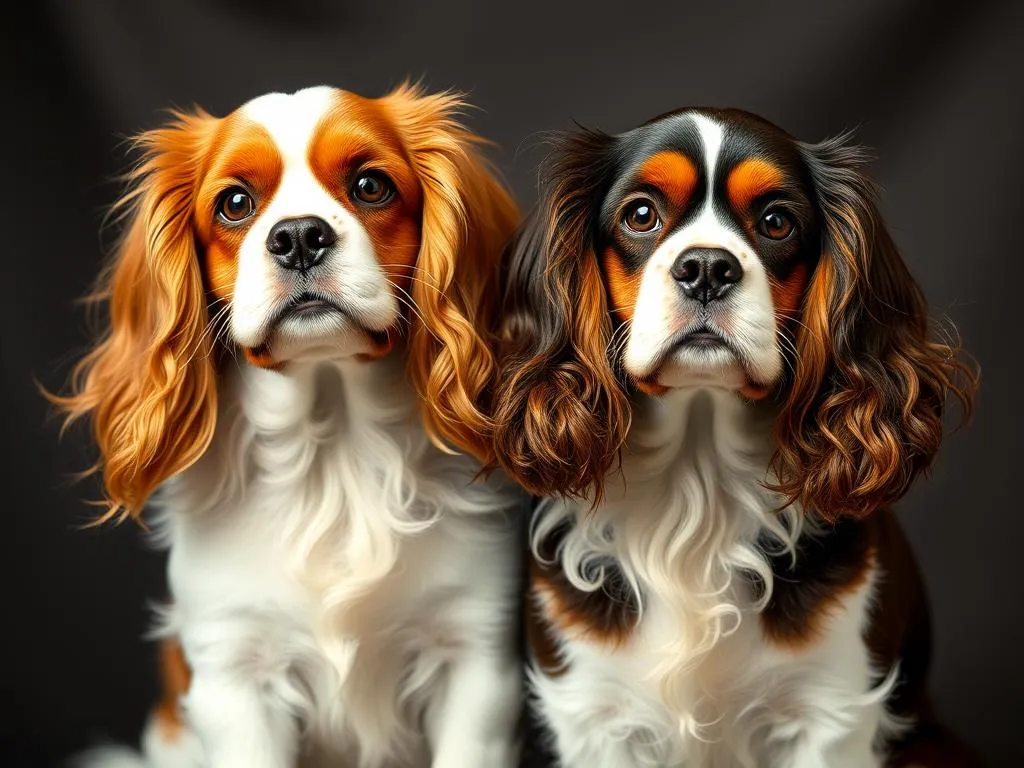
Understanding the differences and similarities between dog breeds is essential for prospective pet owners. Among the popular breeds, the Cavalier King Charles Spaniel and the Cocker Spaniel stand out for their affectionate nature and charming looks. This article will delve into a comprehensive comparison of these two beloved breeds, offering insights that can help you make an informed decision.
Overview of the Breeds
Cavalier King Charles Spaniel
The Cavalier King Charles Spaniel has a rich history that dates back to the 16th century when they were favored by English royalty. Notable for their expressive eyes and gentle demeanor, these dogs were bred primarily as companion animals.
Key characteristics of the Cavalier include:
– Size: They typically weigh between 13 to 18 pounds and stand around 12 to 13 inches tall.
– Coat: Their silky, medium-length coat comes in various colors, including Blenheim (chestnut and white), tricolor, ruby, and black and tan.
– Temperament: Known for their friendly and affectionate personality, Cavaliers are eager to please and adapt well to their owner’s mood.
Cocker Spaniel
The Cocker Spaniel, originally bred for hunting, is one of the oldest spaniel breeds and has a history that also traces back several centuries. These dogs were bred to flush game birds from underbrush and have evolved into beloved family pets.
Key characteristics include:
– Size: Cocker Spaniels are slightly larger, generally weighing between 20 to 30 pounds and standing about 14 to 15 inches tall.
– Coat: They have a beautiful, flowing coat that can be either American or English in style, with colors ranging from black, liver, and golden to various combinations of these.
– Temperament: Cocker Spaniels are known to be affectionate and playful but can also exhibit a stubborn streak at times. They thrive on social interaction and are typically good with children and other pets.
Physical Attributes
Size and Build
When comparing the Cavalier King Charles Spaniel vs Cocker Spaniel, size is one of the most noticeable differences. Cavaliers are smaller and more compact, whereas Cocker Spaniels have a sturdier build.
- Cavalier King Charles Spaniel: 12-13 inches tall, 13-18 pounds.
- Cocker Spaniel: 14-15 inches tall, 20-30 pounds.
This size difference can influence their suitability for various living environments, such as apartments or larger homes.
Coat and Grooming
Both breeds boast beautiful coats, but their grooming needs vary significantly.
- Cavalier King Charles Spaniel: Their medium-length coat requires regular brushing to prevent mats and tangles. They shed moderately, and while they are not hypoallergenic, their grooming needs are manageable.
- Cocker Spaniel: Their longer, flowing coat requires more intensive care. Regular grooming is essential to prevent matting, and they tend to shed more than Cavaliers. Cocker Spaniels also require regular trimming to maintain a neat appearance.
Temperament and Behavior
Socialization Needs
Both breeds are known for their friendly dispositions, but they do have different socialization needs.
- Cavalier King Charles Spaniel: These dogs are incredibly social and thrive on companionship. They are generally great with families, children, and other pets. However, they can develop separation anxiety if left alone for long periods.
- Cocker Spaniel: Cocker Spaniels are also sociable but can be more reserved with strangers. Early socialization is crucial to encourage a well-rounded temperament. Without proper interaction, they may develop fearfulness or aggression.
Energy Levels and Exercise Requirements
In terms of energy levels, both breeds require regular exercise, but their activity preferences differ.
- Cavalier King Charles Spaniel: They enjoy daily walks and playtime but can adapt to a more laid-back lifestyle. They are content with moderate exercise.
- Cocker Spaniel: These dogs are more energetic and require more extensive daily exercise, including walks, runs, and playtime. They thrive in active households where they can expend their energy.
Health Considerations
Common Health Issues
Both breeds have unique health considerations that potential owners should be aware of.
- Cavalier King Charles Spaniel: Common health issues include:
- Mitral valve disease
- Syringomyelia
- Hip dysplasia
-
Eye conditions such as cataracts and retinal problems
-
Cocker Spaniel: This breed may experience:
- Ear infections (due to their long ears)
- Eye conditions like cataracts and glaucoma
- Hip dysplasia
- Skin problems due to allergies
Understanding these health concerns is vital for managing the well-being of your dog.
Lifespan and Longevity
The average lifespan for both breeds tends to be similar, but certain factors can influence their longevity.
- Cavalier King Charles Spaniel: Typically live around 9 to 14 years.
- Cocker Spaniel: Generally have a lifespan of 12 to 15 years.
Regular veterinary care, a balanced diet, and a healthy lifestyle can contribute to a longer, healthier life for both breeds.
Training and Intelligence
Trainability
Both breeds are intelligent, but they may respond differently to training.
-
Cavalier King Charles Spaniel: These dogs are eager to please, making them relatively easy to train. Positive reinforcement methods work best, and they respond well to consistent commands and rewards.
-
Cocker Spaniel: They are also trainable but can be a bit more stubborn. Early training and socialization are crucial to prevent behavioral issues. Using positive reinforcement while being firm can yield the best results.
Behavioral Traits
Certain behavioral traits can affect training.
-
Cavalier King Charles Spaniel: Their affectionate nature means they often seek human interaction, which can be a distraction during training if not managed properly.
-
Cocker Spaniel: They can sometimes display independence or stubbornness, which may pose challenges during training sessions. Patience and consistency are key.
Living Environment and Adaptability
Ideal Living Conditions
Both breeds can adapt to various living conditions, but their needs differ.
-
Cavalier King Charles Spaniel: They are well-suited for apartment living as long as they receive daily exercise. Their smaller size allows them to thrive in more confined spaces.
-
Cocker Spaniel: While they can adapt to apartment living, they are happier in homes with yards where they have space to play and explore. They require more room to roam, especially due to their higher energy levels.
Compatibility with Owners’ Lifestyles
When choosing between the Cavalier King Charles Spaniel vs Cocker Spaniel, consider your lifestyle.
-
Cavalier King Charles Spaniel: Ideal for those who enjoy companionship and can dedicate time to social interaction. They are suitable for both active and more sedentary owners.
-
Cocker Spaniel: Best for active individuals or families who can provide ample exercise and stimulation. They thrive in environments where they can engage in regular play and outdoor activities.
Cost of Ownership
Initial Costs
The purchase price and initial setup can vary significantly between the two breeds.
-
Cavalier King Charles Spaniel: The average price can range from $1,800 to $3,500, depending on the breeder and lineage. Initial setup costs, including supplies and grooming, can add an additional $300 to $500.
-
Cocker Spaniel: These dogs typically cost between $800 and $2,500. Initial setup costs may also range from $300 to $500.
Ongoing Expenses
Ongoing expenses can vary based on factors like health and grooming needs.
-
Cavalier King Charles Spaniel: Average costs for food, grooming, and veterinary care can total around $1,000 to $1,500 annually. However, potential health issues may lead to unexpected expenses.
-
Cocker Spaniel: Ongoing costs are similar, ranging from $1,000 to $1,500 yearly. However, their grooming needs and susceptibility to ear infections may lead to higher veterinary bills.
Conclusion
In summary, both the Cavalier King Charles Spaniel and the Cocker Spaniel are wonderful breeds that offer companionship and joy to their owners. The primary differences lie in their size, grooming needs, energy levels, and some inherent health concerns. Prospective owners should consider their lifestyle, living situation, and personal preferences when choosing between these two charming breeds. Each dog has its unique characteristics, and understanding these can lead to a fulfilling pet-owner relationship.
Before making a decision, it’s essential to visit shelters and breed-specific rescues to find the perfect furry companion for your home.









